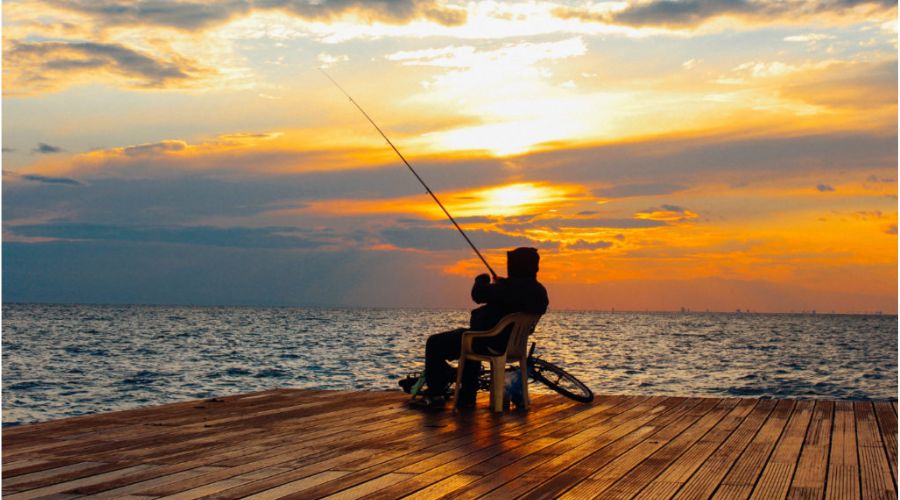The fishing villages of the Andaman Islands are quiet and peaceful oasis of natural beauty and traditional practices. They provide a unique glimpse into the traditional and sustainable lifestyles of the islanders.
Suggested Read: Travel tips for Andaman and How to reach Andaman
- Cultural Significance: The fishing villages are predominantly inhabited by settlers from mainland India and indigenous communities. Fishing is not just an occupation but a way of life, deeply integrated into their cultural and social fabric. Traditional practices like small-scale, artisanal fishing are passed down through generations.
- Fishing practices: Traditional methods are in practice here. Villagers use techniques such as casting nets, line fishing and traps to catch fish. Many adhere to sustainable fishing to protect marine biodiversity, avoiding overfishing and respecting marine life cycles. In these villages, fishing is often a family or community effort, involving boats, nets and group participation.
- Lifestyle and livelihood: Primary occupation being fishing here, it is the primary source of income for the inhabitants. Some fishing related activities like boat building and fish processing also thrives here. The lifestyle in these villages is modest and simple, focusing on harmony with nature and local resources. Women often engage in tasks like drying and selling fish, making it a household-centred economy.
- Infrastructure and boats: Most fishermen use traditional wooden boats or dinghies, often equipped with basic gear. Some villages also have mechanized boats for deeper sea fishing. Fresh catches are sold in local markets, sometimes bartered within communities.
- Marine resources and catch: Common catches include tuna, snapper, lobster, crab and reef fish. A great variety is caught in these villages usually. The seafood economy thrives well. Many villages contribute to the Andaman’s seafood supply for both local consumption and export.
- Tourists attractions in Andaman: Experiential tourism is now being generated and promoted here now. Some fishing villages welcome tourists, offering boat rides, fishing tours and seafood feasts. These tours are becoming increasingly popular. Cultural exchange take place amicably drawing curious visitors here. Visitors can observe and learn about their way of life, traditional fishing methods and cuisine.
- Environmental Challenges: The impact of climate is perceived acutely in these islands. Rising sea levels and changing marine ecosystems affect fishing patterns and livelihoods. Widespread conservation efforts are on. Some villages work alongside NGOs and authorities to maintain sustainable fishing and protect coral reefs.
- Connection to local cuisine: Seafood staples are consumed at large scale. The villages contribute significantly to the region’s cuisine, with delectable and appetizing dishes like fish curry, grilled fish and seafood platters. Most of these dishes are cooked with fresh ingredients. The catch from the villages ensures that local cuisine is always fresh and flavourful.
Visiting the fishing villages offers an authentic experience of the Andaman Islands and being a part of the harmonious relationship between people and the sea all the while emphasizing the importance of preserving these fragile ecosystems is indeed a pleasant feeling even if you are on a vacation to Andaman.
Suggested Read : Andaman tour packages
Key Fishing Regions or villages in Andaman
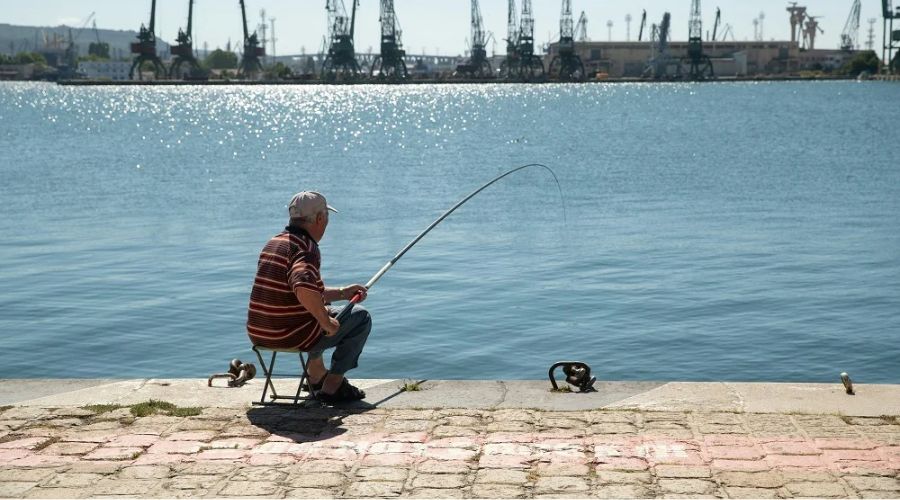
Wandoor as a Fishing Village
Wandoor is a picturesque village located approximately 25 kilometres southwest of Port Blair in the South Andaman district. It is known for its scenic beauty and traditional fishing practices. With a limited population, the community primarily engages in fishing and agriculture, cultivating crops like paddy and coconut.
- Fishing Practices and Lifestyle in Wandoor: The villagers of Wandoor rely heavily on fishing as a primary source of livelihood. Utilizing traditional methods, they employ small boats and nets to harvest the rich marine resources of the surrounding waters. This artisanal approach not only sustains their economy but also preserves the ecological balance of the marine environment.
- Agricultural Activities in Wandoor: In addition to fishing, agriculture plays a significant role in Wandoor’s economy. The fertile lands support the cultivation of paddy and coconut, contributing to the villagers’ sustenance and income. This combination of fishing and farming reflects a harmonious relationship with the natural surroundings.
- Tourism and Conservation: Wandoor is also the gateway to the Mahatma Gandhi Marine National Park, a protected area encompassing 15 islands known for their rich marine biodiversity. The park attracts tourists interested in exploring coral reefs, mangrove forests and diverse marine life. While tourism provides additional income opportunities, the community remains committed to conservation efforts to protect their natural resources.
- Challenges and Adaptations: The village faces challenges such as rising sea levels and environmental changes that impact both fishing and agriculture. Brackish water intrusion has affected some farmlands, prompting the community to adapt their practices to sustain their livelihoods.
Wandoor thus exemplifies a traditional fishing village that balances economic activities with environmental stewardship, maintaining its cultural heritage while adapting to modern challenges.
Suggested Read : Top rated water sports andaman
Chidiya Tapu as a Fishing Village

Chidiya Tapu is located about 25 kilometres from Port Blair and is popularly known as the ‘Bird Island’ of the Andaman and Nicobar Islands. It is primarily recognized for its biodiversity and serene landscapes. It has characteristics of a small fishing village due to its proximity to the coast and the reliance of some locals on fishing for livelihood.
- Fishing Practices in Chidiya Tapu: The villagers, many of whom rely on the sea for sustenance, practice small-scale fishing. Traditional methods, such as line fishing and casting nets, are common, reflecting a sustainable approach to harvesting marine resources. Fishermen target species like mackerel, tuna and reef fish, which are abundant in the waters surrounding the area.
- Community Lifestyle in Chidiya Tapu: Fishing is a family-oriented activity, and the catch is often used for both personal consumption and local trade. Women in the community sometimes participate in cleaning, drying and selling fish in local markets or to nearby towns like Port Blair.
- Scenic and Pristine Environment: Chidiya Tapu is known for its lush mangroves, rocky shores and stunning sunsets. The tranquil waters provide an ideal environment for fishing. The natural beauty of the area enhances its appeal to visitors, including eco-tourists interested in observing traditional fishing methods.
- Marine Biodiversity: The region is part of a rich marine ecosystem, supporting various fish species, crabs and other marine life that sustain the local fishing industry. The villagers are mindful of preserving the coral reefs and mangroves, which act as nurseries for many fish species.
- Tourism Opportunities: While fishing is a livelihood, some locals offer fishing tours and boat rides to visitors, combining their traditional practices with tourism. Tourists can observe or participate in fishing activities, gaining insights into the lifestyle of the local community.
- Challenges of Fishing: Changes in the marine ecosystem due to climate change, rising sea levels and human activities have impacted fishing yields. Some villagers have diversified their livelihoods by engaging in eco-tourism or small-scale agriculture alongside fishing.
- Connection to Local Cuisine: Freshly caught seafood forms an integral part of the local diet. Visitors to Chidiya Tapu can often enjoy meals prepared with locally sourced fish and crabs.
Why Visit Chidiya Tapu for a Fishing Village Experience: The village offers an unfiltered glimpse into the lives of traditional fishermen and their reliance on natural resources. It has a scenic location. The area is surrounded by mangroves, dense forests and the Andaman Sea, making it a peaceful retreat. Its eco-tourism appeal is powerful. Visitors can combine their fishing village experience with bird watching, snorkelling and exploring the region’s natural beauty. Chidiya Tapu stands out as a harmonious blend of traditional livelihoods and environmental conservation, offering a serene yet enriching experience for those who visit.
Suggested Read : Top 5 things in andaman
Rangat as a Fishing Village
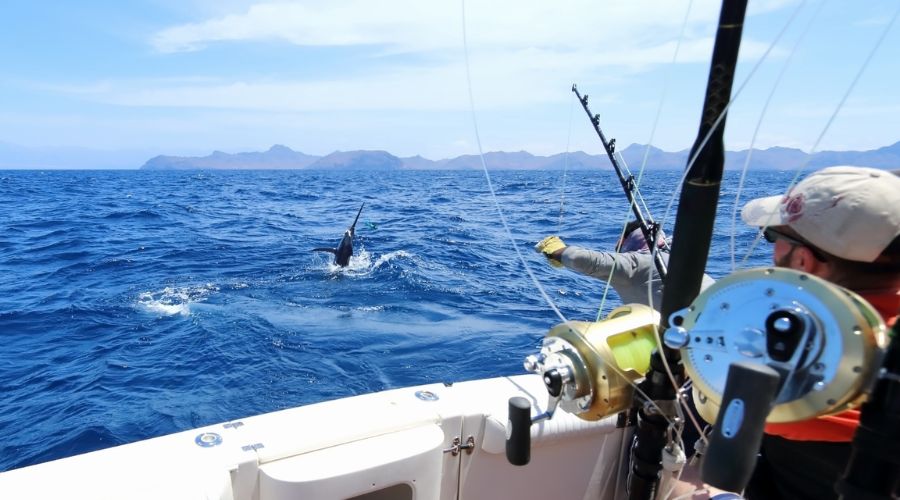
Rangat is located in the Middle Andaman Islands and is known for its serene environment, agricultural activities and small-scale fishing practices. Fishing is an important livelihood for the locals, with both men and women participating in various stages of the process. Traditional fishing techniques using wooden boats and nets are common in the area.
- Community and Economy: The local economy is a mix of fishing and farming, with coconut and paddy cultivation complementing the income from fishing. Fresh fish and seafood are sold in local markets or consumed within the village.
- Marine Biodiversity: The waters around Rangat are rich in marine life, supporting sustainable fishing activities.
- Natural Surroundings: Rangat is surrounded by mangroves and coastal areas, making it ideal for fishing and aquaculture.
Suggested Read : Water falls in andaman
Mayabunder as a Fishing Village
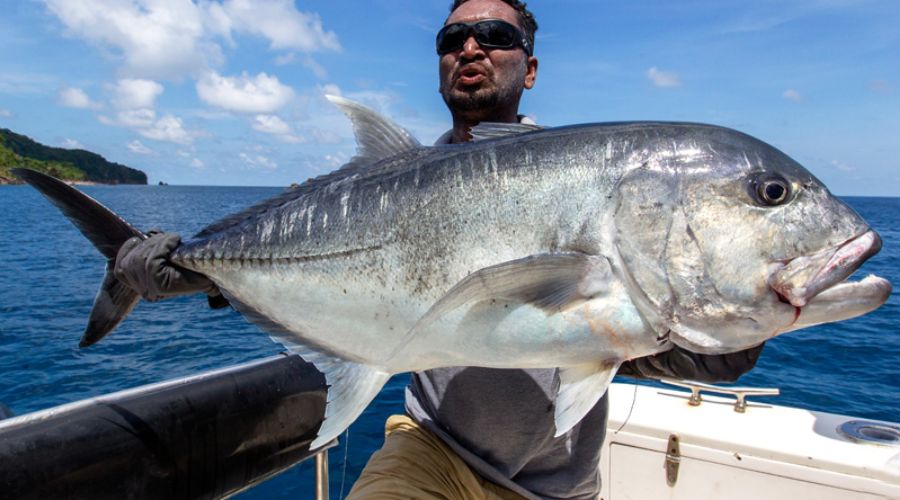
Mayabunder, situated further north in the Andaman Islands, is less populous but holds a rich tradition of fishing and community-based activities.
- Fishing Community: Mayabunder is home to fishing communities that rely heavily on the sea for their livelihood. Some families have been involved in fishing for generations, maintaining traditional practices.
- Fishing Economy: The fishing industry in Mayabunder contributes to the local economy, with fresh catches often exported to nearby markets or towns. Crabs, lobsters and a variety of fish are among the most common catches.
- Integration with Tourism: Some local fishermen also cater to tourists, offering fishing tours and boat rides.
- Tranquil Environment: Like Rangat, Mayabunder is surrounded by natural beauty, including mangroves, beaches and calm waters, which provide a perfect environment for fishing.
- Challenges Faced by Rangat and Mayabunder: Similar to all other fishing villages around, the rising sea levels and ecological changes pose a threat to marine biodiversity. Dependency on fishing makes these villages vulnerable to fluctuations in fish availability and market prices.
Suggested Read : Beach wedding in andaman
Diglipur as a Fishing Village
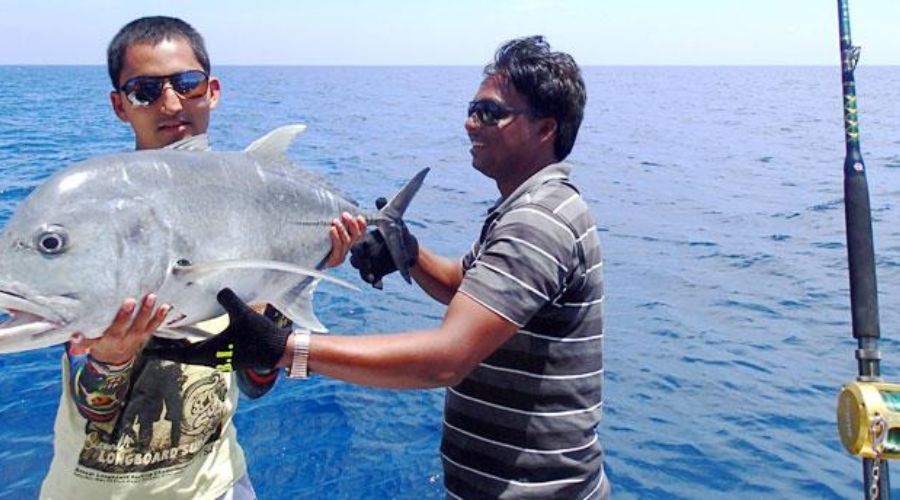
Diglipur, located in the northern part of the Andaman Islands, is a prominent hub for agriculture and fishing. While it is known for its tourist attractions like Saddle Peak and Ross and Smith Islands, its coastal location also makes it a significant fishing village.
- Fishing Economy: Fishing is one of the primary livelihoods for locals in Diglipur. The abundant marine resources of the Andaman Sea make it a vital economic activity. Local fishermen catch a variety of seafood, including tuna, mackerel, sardines, crabs and lobsters.
- Traditional Practices: Most fishermen use small wooden boats or mechanized dinghies for fishing. Traditional techniques, such as casting nets and line fishing, are widely used, reflecting sustainable fishing practices.
- Seafood Trade: The village acts as a distribution point for fresh fish and seafood, which is sold locally and transported to other parts of the Andaman Islands. Many families rely on the seafood trade as their primary source of income.
- Proximity to Rich Marine Biodiversity: The surrounding waters are rich in coral reefs, mangroves and marine life, supporting the village’s fishing activities. The natural ecosystem provides an ideal breeding ground for a variety of fish species.
- Integration with Agriculture: Fishing is complemented by agricultural activities, such as the cultivation of rice, vegetables and tropical fruits like oranges and bananas.
- Tourism Opportunities: While fishing is the primary livelihood, some locals engage in tourism-related activities, such as organizing boat rides and fishing excursions for visitors. The scenic beauty of Diglipur and its coastal areas attracts eco-tourists who are curious about the local way of life.
- Challenges of Diglipur as a Fishing Village: Overfishing, climate change and pollution pose threats to the marine ecosystem and the livelihoods of fishermen. The village has to balance fishing activities with conservation efforts to protect its rich biodiversity.
- Why Visit Diglipur as a Fishing Village: Visitors can experience the traditional fishing lifestyle of the Andaman Islands. The village is surrounded by pristine beaches, mangroves and coral reefs, offering a serene environment. Diglipur’s residents provide a warm and welcoming atmosphere, making it a great place to learn about local culture and traditions.
Suggested Read : Sightseeing in rangat
Manglutan as a Fishing Village
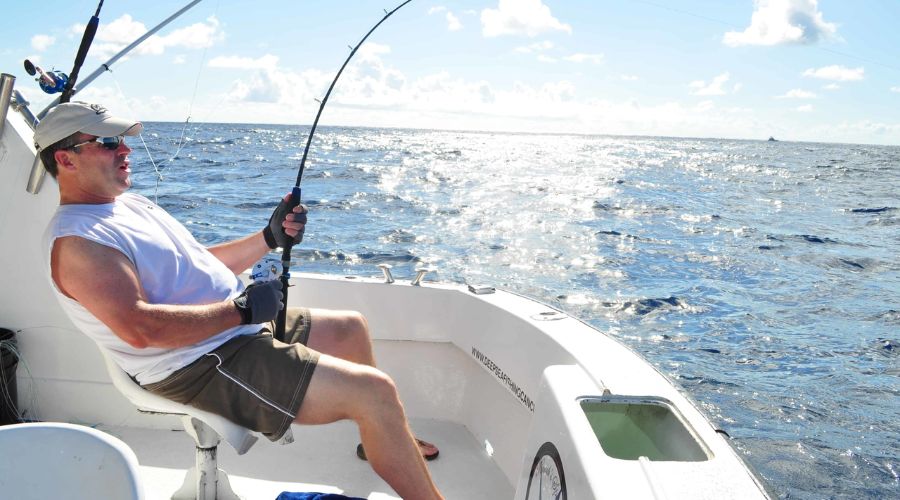
Manglutan is located in South Andaman near Port Blair, is a small and scenic village known for its mangroves, agriculture and fishing activities. While not as prominent as some of the larger fishing hubs in the Andaman Islands, Manglutan holds its own as a peaceful fishing village.
- Fishing Activities: Fishing serves as one of the primary livelihoods for the residents of Manglutan. Villagers primarily engage in small-scale, artisanal fishing using traditional methods like hand lines, casting nets and small wooden or fibre boats. The nearby mangroves and coastal areas serve as breeding grounds for various fish species, crabs and prawns, which are integral to the local fishing economy.
- Mangroves and Marine Ecosystem: Manglutan is well-known for its extensive mangrove forests, which play a crucial role in supporting marine life and protecting the coastline. The mangroves act as a nursery for juvenile fish, ensuring a steady supply for local fishermen while maintaining ecological balance.
- Lifestyle of the Fishing Community: Fishing in Manglutan is a family-oriented activity, with households often working together to catch, process and sell their fish. Women contribute significantly, especially in cleaning, drying and marketing fish in nearby towns like Port Blair.
- Local Markets: Fresh catches from Manglutan are often sold in local markets or transported to nearby urban centres. Some villagers also engage in processing seafood, such as drying fish or making pickles, to add value to their catch.
- Integration with Agriculture: Like many fishing villages in the Andamans, Manglutan combines fishing with small-scale farming. Crops like paddy, coconut and vegetables are cultivated, providing an additional source of income for families.
- Tourism Potential: Manglutan’s tranquil setting and proximity to natural attractions make it appealing to visitors. The mangroves and coastal areas are ideal for eco-tourism activities such as bird watching, kayaking and experiencing traditional fishing.
- Challenges: Environmental Threats such as rising sea levels, mangrove degradation and overfishing pose challenges to the sustainability of fishing in Manglutan. As a small village, it may lack advanced fishing equipment and facilities, relying on age-old practices. Limited infrastructure stagnates its growth.
- Conservation Efforts in Manglutan: Manglutan benefits from local conservation programs aimed at preserving mangroves and marine biodiversity, ensuring the sustainability of its fishing industry.
Why Visit Manglutan as a Fishing Village? The serene environment of the village makes it a must-visit for tourists. The lush mangroves and quiet beaches make it a peaceful getaway. Visitors can observe or participate in traditional fishing practices and learn about the lives of the fishing community. It presents a super-rich biodiversity. The mangroves and marine ecosystems offer opportunities to explore and understand the ecological importance of these areas. Manglutan is a hidden gem that combines natural beauty with traditional livelihoods, offering an authentic glimpse into the Andaman fishing village lifestyle.


